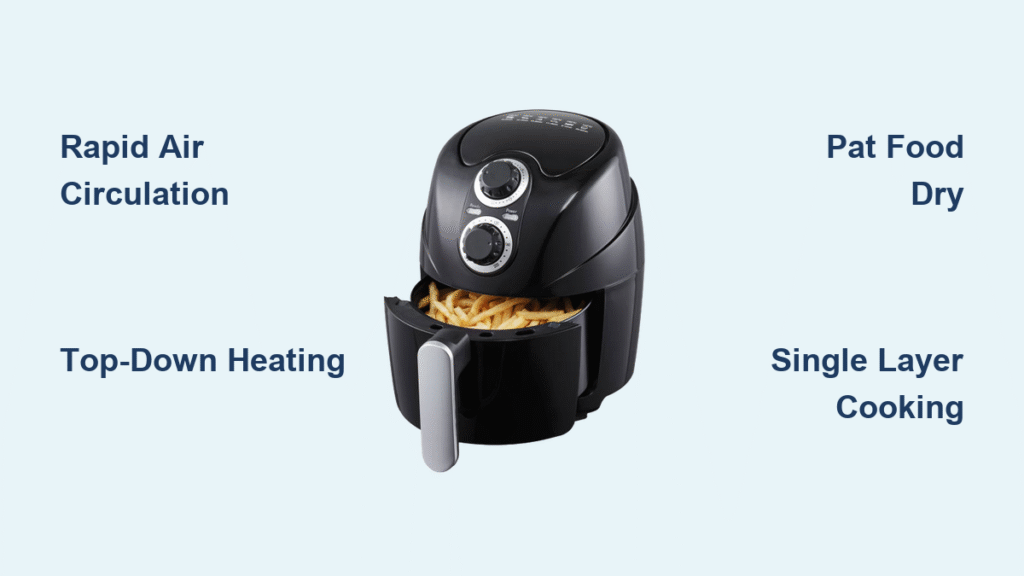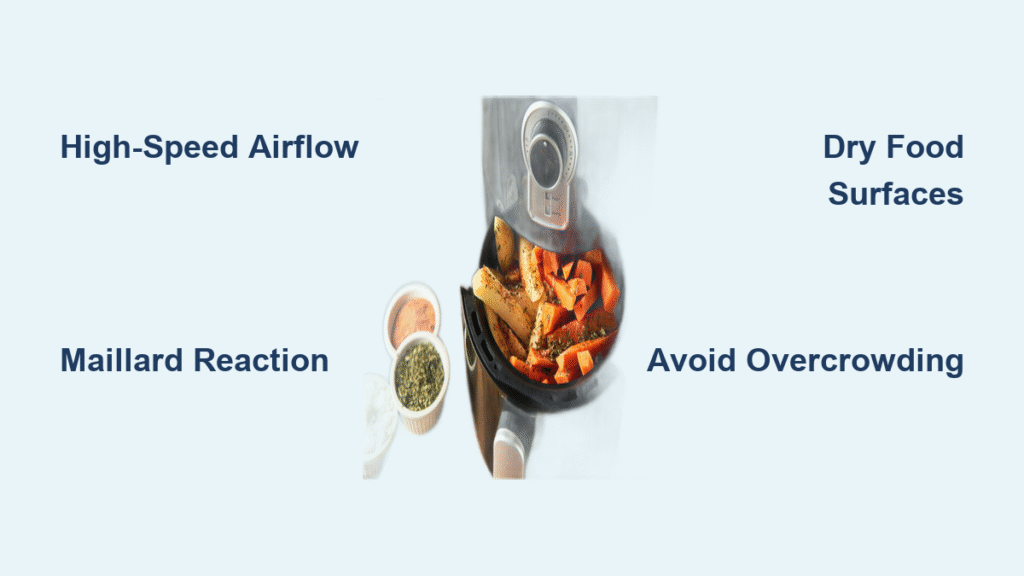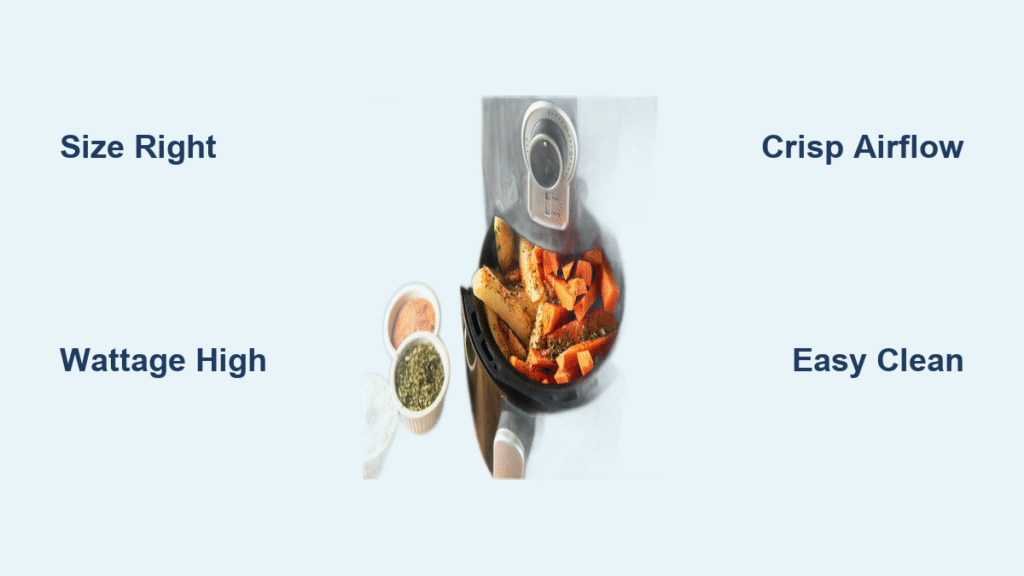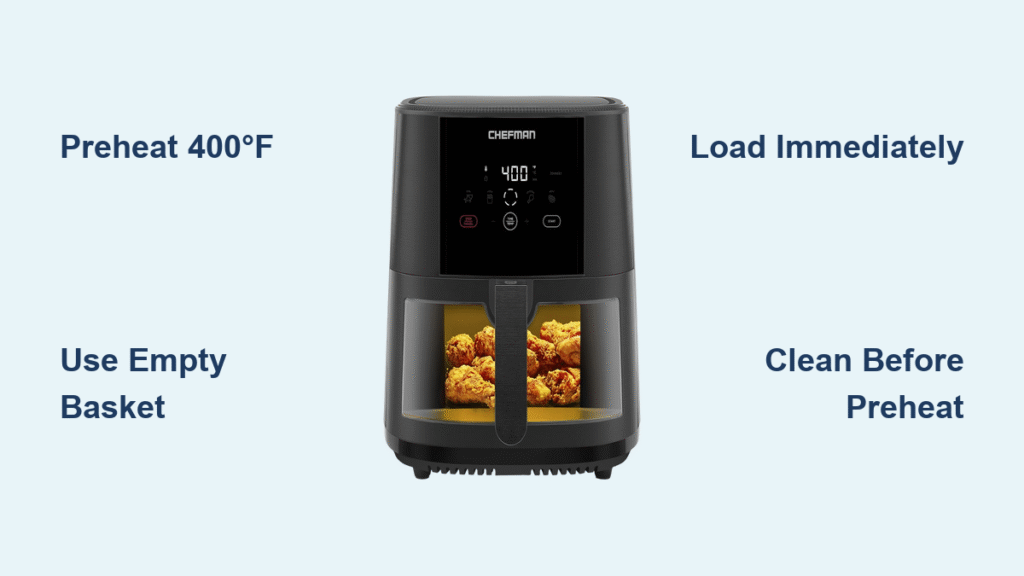You’re craving warm banana bread but don’t want to heat your entire kitchen. Your air fryer sits on the counter, promising quick results—but can you really bake in an air fryer? The answer is a resounding yes. Modern air fryers function as powerful mini convection ovens, circulating super-heated air to create perfectly baked goods in half the time with minimal energy. This guide unlocks your appliance’s hidden potential, showing exactly how to adapt any oven recipe for air fryer success. Forget heating your full-size oven for single servings—you’ll master techniques to achieve golden cookies, moist cakes, and flaky pastries without breaking a sweat.
Understanding how to bake in an air fryer starts with recognizing its unique mechanics. Unlike traditional ovens, your air fryer blasts intense heat from a top-mounted element while a high-powered fan circulates 400°F air through a compact chamber. This creates dramatic efficiency: most baked goods cook 20-25% faster while using 80% less energy. But this concentrated heat demands smart adjustments—exposed surfaces brown rapidly while bottoms stay pale. The key? Learning to work with your appliance’s quirks rather than against them. By the end of this guide, you’ll confidently convert any recipe and troubleshoot common pitfalls.
Why Air Fryer Baking Beats Traditional Ovens
Your countertop appliance delivers game-changing advantages for small-batch baking. Summer baking becomes bearable since the compact chamber emits minimal ambient heat—no more sweating through July cake emergencies. Energy savings are substantial: baking a single cinnamon roll uses just pennies worth of electricity versus dollars in a full oven. Most importantly, baking time plummets—cookies finish in 12 minutes instead of 15, cakes in 20 versus 25. But these benefits come with trade-offs: the top-down heat distribution requires strategic adjustments to prevent burnt tops and raw centers. Master these patterns, and your air fryer becomes indispensable for everything from emergency cookie cravings to single-serving desserts.
Critical Heat Distribution Patterns
Notice how your air fryer browns the top of baked goods faster than the bottom? This happens because the heating element sits directly above circulating air. For yeast-based items like rolls, this creates a rapid crown rise but softer undersides. Dense batters like brownies develop a crackly top crust while centers stay fudgy. Always position delicate items (custards, soufflés) toward the back where heat is slightly less intense. If your model has adjustable racks, lower the rack for items needing bottom browning (like pizza crusts) or raise it for even cake tops.
When Not to Use Your Air Fryer
Despite its versatility, avoid baking large layered cakes or multi-pan loaves—the cramped space causes uneven rising. Bread machines or conventional ovens handle yeast-heavy doughs better for quantities over 6 servings. Also skip steam-dependent recipes like classic baguettes; the dry air environment prevents proper crust development. Stick to single-layer cakes, cookies, muffins, and small loaves where the air fryer shines.
Recipe Conversion Rules That Actually Work
Converting oven recipes requires three precise adjustments—get these wrong and you’ll face burnt disasters. Always drop the temperature by 25°F (up to 50°F for delicate items like custards). A standard 350°F oven recipe becomes 325°F in your air fryer. Reduce baking time by 20-25%, but crucially: start checking doneness at 30% of the original time. For that 60-minute banana bread? Peek at 20 minutes. Never rely on visual cues alone—the top may look perfect while the center remains raw.
The Thermometer Test You Can’t Skip
Your instant-read thermometer is non-negotiable for how to bake in an air fryer successfully. Insert it into the deepest part of your baked good when it looks done. Most items finish between 200-210°F internally:
– Cakes: 205°F (springy but not wet)
– Cookies: 195°F (set edges with soft center)
– Yeast breads: 200°F (springy to touch)
This prevents the classic air fryer trap: pulling out “done” brownies that collapse because they’re only 185°F inside. When in doubt, under-bake slightly—carryover heat finishes the job during resting.
Essential Equipment Guide for Foolproof Results

Pan Size Requirements
Measure your fryer’s basket depth and width before buying pans—never guess. For 4-6 quart models (most common), a 6-inch round or square pan is the sweet spot. Leave ½-inch clearance on all sides for airflow; crowding causes uneven baking and potential fire hazards. Silicone molds work beautifully for egg-heavy batters like mini quiches but avoid glass dishes—they trap heat and cause cracking. Test-fit pans with the basket fully inserted; if it scrapes the sides, it’s too big.
Material Choices That Prevent Disasters
- Light aluminum pans: Reflect heat to prevent over-browning (ideal for yellow cakes)
- Dark metal pans: Absorb heat faster for crisper cookie bottoms (use for brownies)
- Perforated parchment: Essential for cookies—prevents sticking while maintaining airflow
- Avoid glass/ceramic: They insulate too much, causing raw centers
Pro Tip: Place a small foil sling under parchment for easy cake removal—just lift the handles to free your creation.
Prevent Over-Browning Like a Pro

The Foil Tenting Strategy That Saves Cakes
When your cake top reaches golden brown (usually halfway through baking), create a loose foil tent with 8-12 steam holes punched through. Anchor the edges under the pan rim to prevent contact with the heating element. Continue baking until a thermometer confirms 205°F internally. This technique prevents burnt surfaces while ensuring thorough cooking—critical for dense batters like banana bread.
Mid-Bake Adjustments for Uniform Results
Rotate pans 180° halfway through baking to counteract hot spots. For items like cinnamon rolls or hand pies, flip them entirely at the halfway point for even crust development. Delicate items like custards benefit from a 5-minute rest inside the closed fryer after cooking—this prevents collapse from sudden temperature changes.
Quick Reference Recipe Chart for Instant Success
| Item | Temperature | Time | Critical Adjustment |
|---|---|---|---|
| Giant chocolate chip cookie | 325°F | 12-14 min | Flatten slightly before baking |
| 6-inch layer cake | 320°F | 18-22 min | Tent with foil at 14 minutes |
| Cinnamon rolls (refrigerated) | 330°F | 9-11 min | Ice while warm for bakery texture |
| Mini pizza | 375°F | 8-9 min | Add cheese halfway to prevent burning |
| Fudgy brownies | 325°F | 18-20 min | Toothpick should show moist crumbs |
| Banana bread mini-loaf | 330°F | 22-25 min | Check center at 18 minutes |
Troubleshooting Common Air Fryer Baking Failures
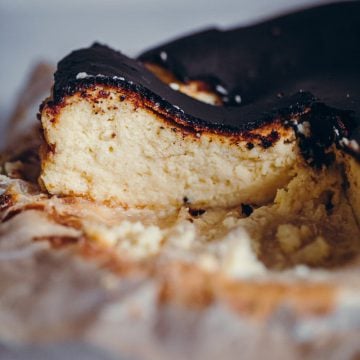
Burnt Top with Raw Center
Why it happens: The top heating element scorches surfaces before heat penetrates dense batters. Fix immediately: Lower temperature 25°F, tent with foil, and extend time by 3-5 minutes. For future batches, reduce initial temperature by 50°F for dense items like carrot cake.
Pale, Soft Bottoms
Why it happens: Insufficient bottom heat in the air circulation pattern. Fix: Switch to a dark metal pan, flip items halfway, or place a wire rack under your pan to elevate it closer to the heating element. For pizza, lift the crust with tongs at the 4-minute mark to crisp the underside.
Batter Overflow or Sticking
Why it happens: Overfilling pans or inadequate pan preparation. Fix: Fill pans only ⅔ full, grease metal pans thoroughly with butter (not spray), and always use parchment for sticky batters. If batter spills, clean the fryer immediately after cooling to prevent smoke in future uses.
Pro-Level Techniques for Advanced Results
Frozen Dough Advantage
Store-bought frozen cookie or biscuit dough performs exceptionally well straight from freezer to fryer. Add just 1-2 extra minutes to baking time—no thawing needed. The rapid heat creates a crisper exterior while keeping centers tender, mimicking professional bakery texture.
Blind-Baking Perfect Pie Crusts
Pre-bake empty pie shells for 5-7 minutes before adding fillings. This creates a moisture barrier that prevents soggy bottoms in custard-based desserts. Line the shell with parchment and pie weights, then bake at 350°F until lightly golden.
Batch Baking Without Compromise
For multiple cookies, never stack items—airflow restrictions cause uneven results. Instead, bake in single layers on separate parchment sheets. Cool the basket 2 minutes between batches to maintain consistent temperature. For best results, bake identical items together (all chocolate chip, not mixed batches).
Cleaning and Maintenance for Longevity
Let your fryer cool 15 minutes minimum before washing—thermal shock can warp metal pans. Line the lower tray with foil to catch drips; discard after each use. Clean the basket with a non-abrasive sponge; metal scrubbers destroy non-stick coatings. For stubborn residue, fill the basket with warm soapy water and let it soak while cooling. Store small pans nested inside the basket to save space, and keep parchment flat in a document sleeve to prevent curling.
Master Your Air Fryer Bakery Today
Transform your air fryer from a reheating tool into a personal bakery by starting with foolproof recipes like giant cookies or cinnamon rolls. Track your first attempts in a small notebook—note temperature tweaks and timing adjustments for your specific model. Within 3-5 bakes, you’ll intuitively understand its quirks. Remember: the secret to how to bake in an air fryer successfully lies in thermometer verification and strategic tenting. Once mastered, you’ll never heat your full-size oven for single servings again—enjoy warm, fresh-baked goods in minutes with minimal cleanup. Your countertop appliance isn’t just for fries; it’s your ticket to stress-free, energy-efficient baking year-round.


